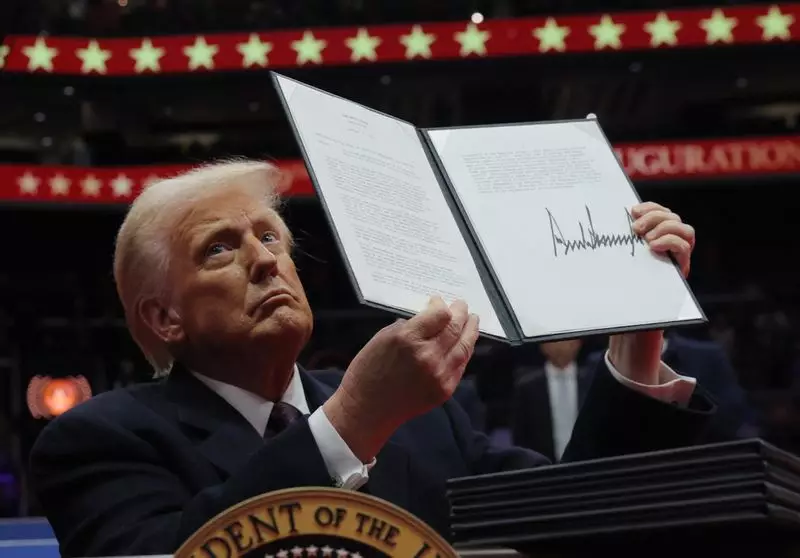The recent executive order signed by President Trump marks a significant shift in the management of federal employment, compelling government workers to abandon remote work in favor of traditional office settings. This decisive measure has sent ripples through the federal workforce, altering the dynamics of employment that evolved during the COVID-19 pandemic. Remote work arrangements had become a staple during the crisis, allowing employees to maintain productivity while adhering to safety protocols. Trump’s mandate, however, is an unequivocal push against this trend, suggesting an effort to not only restore previous norms but also to reshape the federal government workforce fundamentally.
Trump’s directive raises questions about the strategic motivations behind such a sudden and forceful policy change. Some supporters of the President argue that this policy aims at destabilizing the entrenched civil service by facilitating the replacement of long-standing employees with individuals deemed more loyal to Trump. This notion casts the executive order as not merely a policy on work arrangements but as part of a broader strategy to reshape the federal government’s culture and prioritize allegiance over experience. The claim that this initiative seeks to dissolve a robust civil service structure invites scrutiny regarding the motivations for what may be perceived as political purging.
In conjunction with the return-to-office order, Trump has introduced a hiring freeze and established an advisory group titled the Department of Government Efficiency. The purpose of this agency appears to be streamlining government functions with the intent of reducing overall government size. Yet, this amalgamation of measures raises concerns over the potential implications for employees and the quality of public services. By fostering an environment that may drive seasoned professionals out of the federal workforce, the executive order risks not merely an exodus of employees but a degradation of institutional knowledge, potentially hampering governmental efficacy.
The reaction from federal employees can be anticipated to be one of skepticism and resistance, especially those who have grown accustomed to the flexibility and work-life balance facilitated by remote work. Many employees may feel disillusioned and devalued while facing the prospect of returning to traditional office settings under stringent conditions. There lies a broader implication here; the act serves as a barometer of workplace culture in federal agencies. Attempts to increase surveillance and enforce physical presence could lead to increased morale issues and decreased productivity, as employees grapple with dissatisfaction stemming from perceived disenfranchisement.
Trump’s executive order to require federal employees to return to in-person work is laden with implications for the future of the civil service and the federal workplace. It poses critical questions about the direction in which the government will move concerning employment practices, loyalty, and the efficiency of service delivery. As the full ramifications of this decision unfold, it will be essential for stakeholders to remain cognizant of the balance between administrative efficiency and the preservation of a well-functioning, committed workforce. The next steps in this unfolding narrative will be pivotal in shaping the future landscape of federal employment in America.

